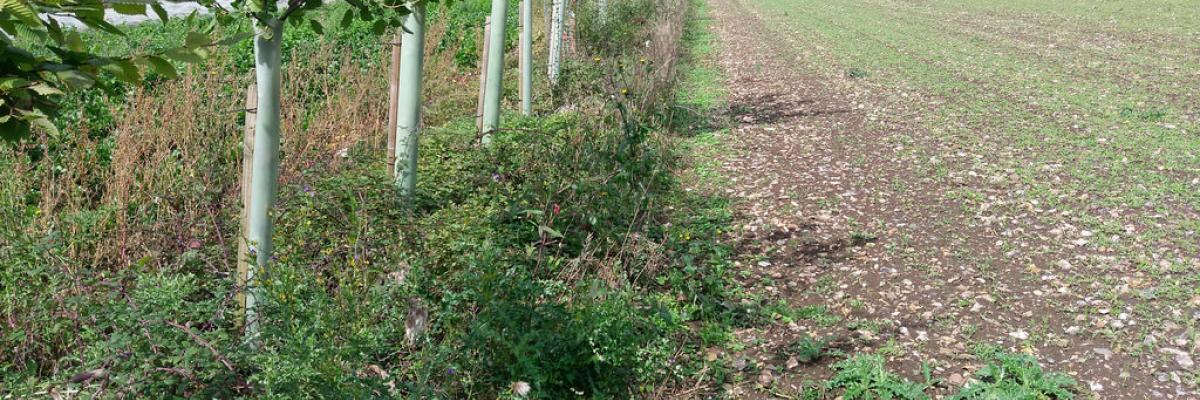
Woodland Trust Farmers Weekly online academies
Tree management guidance
View the tool
Access practical tree management guidance through these Farmers Weekly Academy e-learning lessons provided by the Woodland Trust. ‘Where to plant trees’ includes information on planting to provide shade and shelter for livestock, improve soil and water management, prevent soil erosion, provide a habitat for pollinators and insects, and silvoarable agroforestry systems. ‘How to plant trees’ includes general considerations such as preparing the ground and planting distances, followed by a step-by-step guide to pit planting. ‘Choosing your species’ gives some important practical tips which are dependent on your objectives. ‘Managing your woodland’ provides an introduction on how to manage your woodland in the early years after your trees have established - including how to ensure trees can be part of a sustainable, productive, and healthy, wildlife-rich habitat on your farm. It looks at coppicing, pollarding, formative pruning and thinning.
- Planting the right trees in the right place is vital.
- Check for any restrictions to the land that could stop you planting and do not plant on land of high ecological value.
- It is important to develop a long term management plan for your trees and include your objectives and timescales.
- Consider your soil type, soil conditions, wildlife you may want to attract, and what you may want to use your trees for.
- The best time to plant trees is between November and March, when trees are dormant. Take note of native species that are growing well nearby and start your planting with these species.
- Always plant native UK sourced and grown species. This is important to help limit the risk of disease spreading.
- Your planting plan should reflect any changing soil conditions and contours across your land. Plant along farm contours, perpendicular to prevailing winds or in areas vulnerable to soil erosion. Shelter belts can be integrated with adjacent planting next to existing hedges.
- One to two year old saplings will need the least immediate maintenance and will offer canopy cover within a few years.
- A diverse woodland structure composed of trees of different species and ages will increase resilience in the face of threats from tree pests, diseases and climate change.
The link available through the ‘View the resource’ button takes you to ‘Mange your woodland’, however you can access all lessons via the links below…
http://www.fwi.co.uk/academy/lesson/choosing-your-species
http://www.fwi.co.uk/academy/lesson/where-to-plant-trees
http://www.fwi.co.uk/academy/lesson/how-to-plant-trees
http://www.fwi.co.uk/academy/lesson/manage-your-woodland
Photo credit: Organic Research Centre

